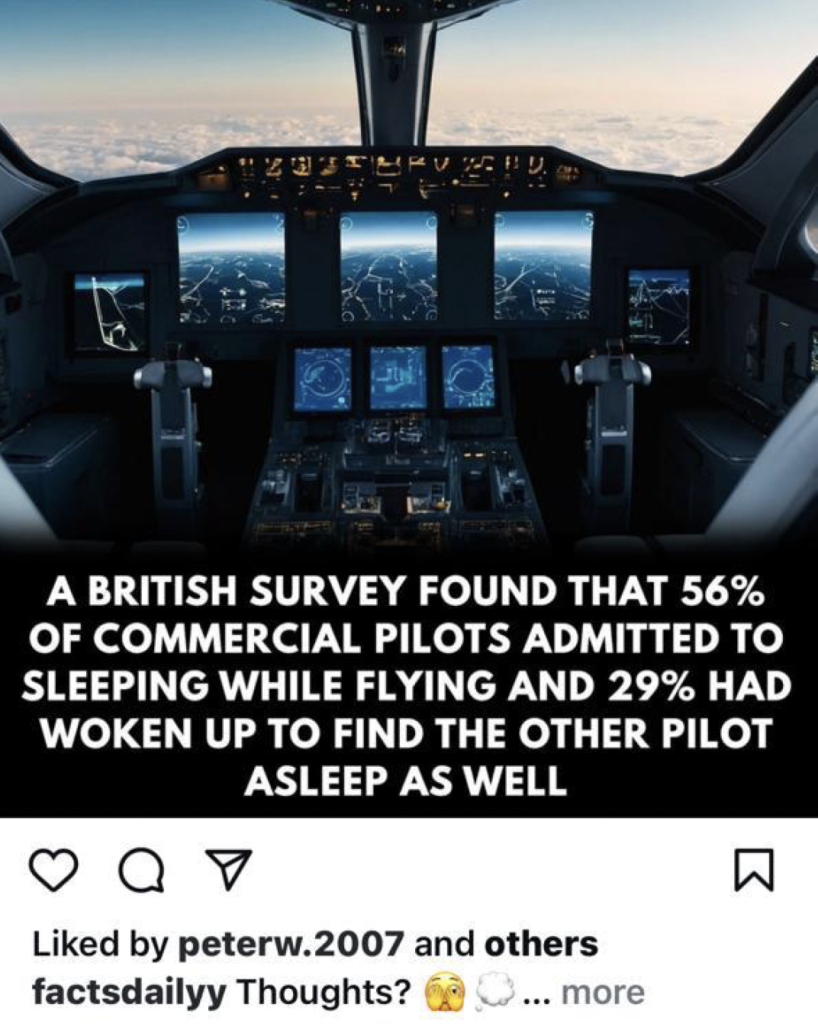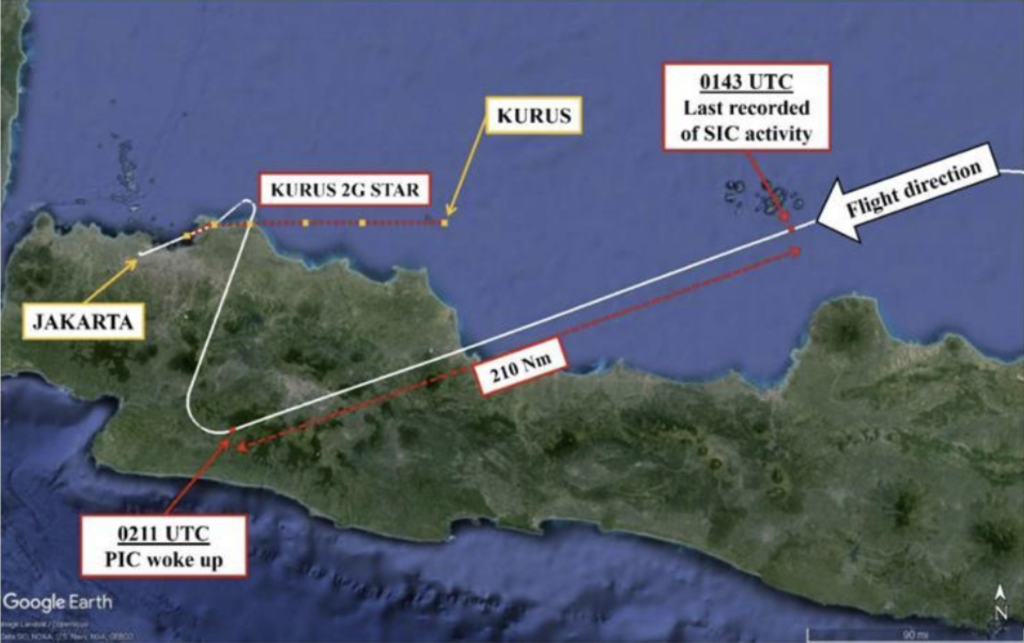Introduction.
In January 2024, the Indonesian public was shocked by the news that a pilot and co-pilot fell asleep while flying a plane from Kendari / KDI airport to Soekarno-Hatta / CGK airport early in the morning, central Indonesian time. Nearly 1 month of news on social media and YouTube channels reviewed this incident with various sources. Everyone discussed this incident with various views and understandings. However, by not justifying the defense of Pilots and Co- Pilots who fell asleep for more than 30 minutes, we as an Association that cares about Indonesian aviation, will provide a point of view that can restore public confidence as users of air transportation.
Chronology,
At the end of January 2024, one month after the incident there was news that the Pilot and Co- Pilot / Flight Officer were flying from Kendari / KDI airport, Southeast Sulawesi to Soekarno- Hatta / CGK Airport, Tangerang. Both the mass media, social media and YouTube channels have told the chronology and have received clarification/answers from the pilots and FOs concerned regarding the incident and the reasons, even the Indonesian Minister of Transport has given instructions for sanctions against them.
Travel / flight ID-6723, type A320 aircraft, with one set of crew, started out as usual, everything was carried out normally. Take off, Climbing and Cruising at an altitude of 36,000 feet / Flight Level 360. At 08:37 the Pilot in-Command offered the Flight Officer to sleep (this is likely the PIC understands the FO conditions), at 08:43 the PIC carried out his duties as usual and Still communicating with ATC, apparently after 08:43 the PIC also felt sleepy and fell asleep for approximately 28 minutes. This means not long after FO fell asleep. When I woke up the plane was flying at 250 degrees (meaning to the left of its proper path). When the PIC woke up, the FO woke up and made communication contact with ATC (ATC had called ID-6723 many times). To cover up the “oversleep” the PIC apologized and reported a problem with radio communications. Furthermore, the plane can make a normal landing even though there is a 30 minute delay from the scheduled arrival.
Discussion,
This kind of thing is something that often happens on domestic and international flights by PICs of any country. In fact, based on a survey conducted in England, it was found that 56% of PICs on commercial flights fell asleep while flying and 29% woke up to see the pilot next to them also asleep. (A British Survey found that 56% of Commercials Pilots admitted to sleeping while flying and 29% had woken up to find the other Pilot asleep as well).


Source: Screengrab via KNKT
In the case of the PIC and FO falling asleep on the same plane, it is a humane thing, but it should be done alternately, and if the PIC / FO sleeps to avoid feeling sleepy, it is best to ask one of the cabin crew to accompany them to chat in the Cockpit.
A little discussion on the flight path track which deviated to the left from the actual path. This is interesting and concerns us, namely: before the PIC and FO start the engine, etc., of course the PIC / FO enters data called Input data in the FMC or FMS, the Flight Management System is a tool installed on modern airliners. It is a special computer component that functions to support flight operations, providing virtual data and a number of elements related to flight, from starting the engine to taking off and turning off the engine. To understand what FMS is, this component stores data in the form of flight planning. The data stored in FMS is dynamic, meaning it can always be updated if there are changes to plans. PIC / FO can read data information on the FMS via Navigation Display / ND. Here the PIC / FO can enter the SID (Standard Instrument Departure) where the Pilot will depart. STAR (Standard Arrival Route)
Technically we can inform you that FMS consists of;
1. FMC (Flight management Computer) is an aircraft computerized system that uses a large database to allow routes to be programmed and input into the system through data generation. And this system can be updated with the position of the aircraft by referring to the available navigation system tools.
2. AFCS (Automatic Flight Control) is a sophisticated component that allows pilots to use an automatic control system. This technology helps reduce pilot fatigue during long-distance flights. The Auto Pilot system follows the route data that has been input, however the pilot still needs to monitor it.
3. EFIS (Electronic Flight Instrument System), is an instrument display in the cockpit. EFIS is able to depict information using CRT technology, but the modern version already uses an LCD which can display multi colors. In essence, this component makes it easier for the PIC to ensure the flight runs smoothly and according to plan.
4. Aircraft Navigation System, Lastly is aircraft navigation which functions as a reference for navigation directions so that the aircraft can continue to operate according to the predetermined route. It is very important to ensure the navigation system is functioning properly before the plane takes off.
From the information above, it can be used as a guide that flights remain safe and there is no need to worry. However, FMS or FMC are components that periodically need to be calibrated or re-set / updated or whatever that can be used as a route reference, etc. by the PIC / FO.
Seeing that this component is very secure and valid from the data output input by the PIC/FO before taking off, based on information obtained from the KNKT (National Transportation Safety Committee / NTS-Indonesia), after 28 minutes the PIC woke up to the aircraft heading 250, offset drifting to the left of its proper path. The question arises, why does this happen? apart from several other questions regarding the virality of this (natural) incident.
First, the plane went off course to the left of its proper course, even though FMS/FMC could make course corrections. Then from the route that has been entered, including the enroute checkpoint. Can this happen to components that can adjust to air conditions such as wind, thunderstorm, etc. If the FMS tool/component is correct, of course the plane will follow the route up to the last NavAid overhead with a cruising flight altitude of FL 360. It won’t go off course to the left with other risks. From a delay on Arrival of 30 minutes due to the left track, if you convert the overhead at FL 360 then the PIC maneuvers a descent of 2,000 ft / minutes then the delay required is only 18 minutes.
Second, it is a fundamental question that this information emerged from the KNKT, where the main task of the KNKT’s existence is handling accidents, even though ID-6723 was not in an accident or that flight ID-6723 did not experience an accident and there was no material loss to the passengers. So accidents are categorized or consist of preliminary incidents, injury accidents and fatal accidents. KNKT does not work in the first type (Prelimenary Incident), because this kind of thing is an event that can be reported internally.
Like the incident where a plane landed on the Taxiway Parallel runway at an airport, the KNKT did not take part in the investigation. However, in terms of attention to Airlines, etc. So that this doesn’t happen again, there needs to be an internal investigation by the Directorate General of Civil Aviation. Regarding the viral news originating from the leak of the KNKT statement, this also really attracts our attention as an Association that cares about this matter. Found in Law no. 1 of 2009 in Article 359 paragraph 5.2, that the KNKT must maintain the confidentiality of the results of the investigation and if “asked” to provide a response, then only partially and not create fear of using air transportation. Meanwhile in verses 4.11 and 4.12. Where is the Law. no.1 of 2009 refers to Annex 13 of ICAO regarding procedures for conducting investigations.
Please note that the results of investigations carried out by the KNKT cannot necessarily be used as a basis for evidence in court. So the results of the NTSC’s findings are for the Regulator to carry out an inspection and for the company concerned to prevent a similar incident from occurring. However, in paragraphs 4.11 and 4.12, the public is allowed to be involved in conducting investigations but is not allowed to disseminate the results of KNKT investigations.
In the viral news about Pilot sleeping on social media, etc. is that it starts from KNKT sources, so this is something that needs to be straightened out. And the suggestions we can give are:
1. SOPs should be repeated and implemented by airlines regarding sleeping while flying an airplane, with clear terms and conditions.
2. Airlines are obliged to place Pilot Observers from pilots who have not yet found employment with the airline on a rotating basis and on all long routes. Or require the cabin crew to go to the Cockpit more often.
3. The sanction for the PIC and FO should not be unilateral dismissal/dismissal by the company at the pressure of outside parties.
There are many similar and even more fatal incidents that started with falling asleep while flying a plane, but the imposition of sanctions is not like in this case because the PIC works at the Directorate General of Civil Aviation. This article is a reminder for Pilots, ATC and KNKT Staff, to be wiser in making news viral.
March 16, 2024




